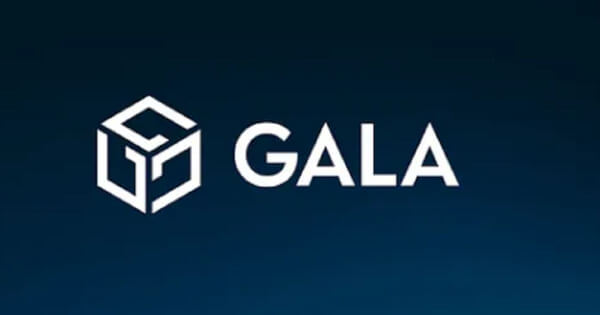Lawrence Jengar
Aug 10, 2024 07:19
Explore how cryptocurrency mining works, its various methods, and its significance in maintaining blockchain networks, according to Gala News.
Cryptocurrency mining is a fundamental process that powers the blockchain ecosystem by creating new coins and verifying transactions. According to Gala News, this activity involves solving complex mathematical problems using computer power.
The Basics
Mining, particularly in the context of Bitcoin (BTC), requires miners to solve cryptographic puzzles. These puzzles are intricate mathematical equations that demand substantial computational resources. When a miner successfully solves a puzzle, they can add a block of transactions to the blockchain and are rewarded with new coins. This process, known as ‘proof of work’ (PoW), ensures that the miner has done the necessary computational work to earn the tokens.
The Steps
- Transaction Verification: When someone sends a cryptocurrency transaction, it must be verified to ensure the sender has sufficient funds and authorization.
- Block Creation: Verified transactions are grouped into a block.
- Puzzle Solving: Miners compete to solve a cryptographic puzzle associated with the block. The puzzle is challenging to solve but easy to verify once completed.
- Block Addition: The first miner to solve the puzzle adds the block to the blockchain and receives a reward.
- Reward Distribution: The miner is rewarded with newly minted cryptocurrency and transaction fees.
Why is Mining Important?
Mining is crucial for maintaining and securing the blockchain network. It ensures all transactions are legitimate and prevents double-spending. By requiring miners to solve complex puzzles, the network remains decentralized and resistant to attacks, promoting security and trust without a central authority.
Different Methods of Cryptocurrency Mining
- CPU Mining: Initially used for Bitcoin, but now obsolete due to increased mining difficulty.
- GPU Mining: Uses graphics processing units, offering more computational power than CPUs.
- ASIC Mining: Employs specialized devices built specifically for mining, offering the most power and efficiency but at a high cost.
- Cloud Mining: Allows individuals to rent mining hardware from a provider, eliminating the need to purchase and maintain equipment.
Energy Conversion: Turning Electricity into Digital Gold
Mining converts energy into digital value. Miners use electricity to power hardware that performs the computations needed to mine cryptocurrencies. This process consumes significant energy, raising concerns about its environmental impact. However, the energy also secures the network and verifies transactions, making it integral to the blockchain ecosystem.
Mining on GalaChain: Rewarding Founder’s Nodes
In the Gala ecosystem, mining is analogous to operating Founder’s Nodes. These nodes provide the computational power necessary to maintain the decentralized network and are rewarded with $GALA tokens. Founder’s Node operators are vital for supporting GalaChain’s infrastructure, much like miners support the Bitcoin network.
How Founder’s Nodes Work
- Computational Contribution: Node operators contribute their computing power to support the network.
- Reward Mechanism: Operators are rewarded with $GALA tokens for their contribution.
- Decentralization: This system helps maintain the decentralized nature of the Gala ecosystem, preventing any single entity from controlling the network.
For more detailed information, visit the Gala News.
Image source: Shutterstock
Credit: Source link






















 Bitcoin
Bitcoin  Ethereum
Ethereum  XRP
XRP  Tether
Tether  Solana
Solana  USDC
USDC  Dogecoin
Dogecoin  Cardano
Cardano  Lido Staked Ether
Lido Staked Ether  TRON
TRON  Wrapped Bitcoin
Wrapped Bitcoin  Wrapped stETH
Wrapped stETH  Chainlink
Chainlink  Avalanche
Avalanche  Sui
Sui  Stellar
Stellar  Litecoin
Litecoin  Shiba Inu
Shiba Inu  Toncoin
Toncoin  Hedera
Hedera  LEO Token
LEO Token  USDS
USDS  Hyperliquid
Hyperliquid  Polkadot
Polkadot  WETH
WETH  MANTRA
MANTRA  Bitcoin Cash
Bitcoin Cash  Bitget Token
Bitget Token  Ethena USDe
Ethena USDe  Wrapped eETH
Wrapped eETH  Uniswap
Uniswap  Monero
Monero  NEAR Protocol
NEAR Protocol  Pepe
Pepe  WhiteBIT Coin
WhiteBIT Coin  Aave
Aave  Ondo
Ondo  Bittensor
Bittensor  Aptos
Aptos  Internet Computer
Internet Computer  Dai
Dai  Official Trump
Official Trump  Ethereum Classic
Ethereum Classic  Tokenize Xchange
Tokenize Xchange  Mantle
Mantle  OKB
OKB  Gate
Gate  sUSDS
sUSDS  Coinbase Wrapped BTC
Coinbase Wrapped BTC 